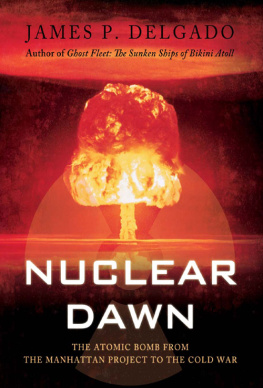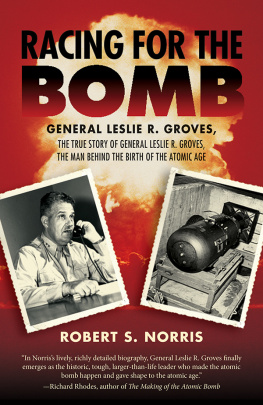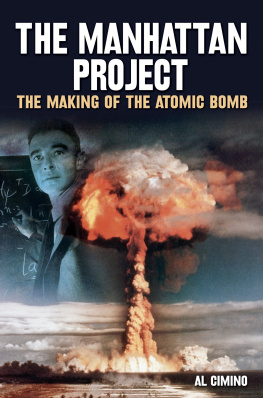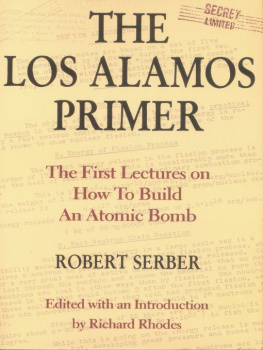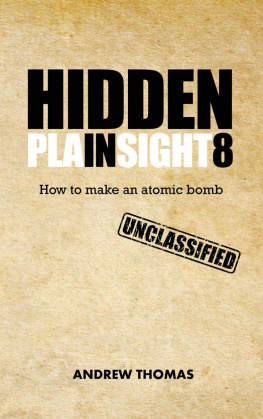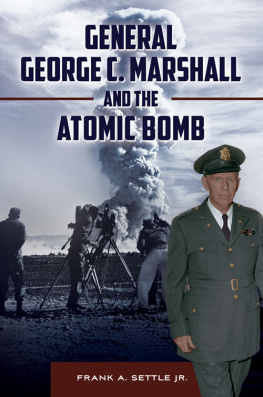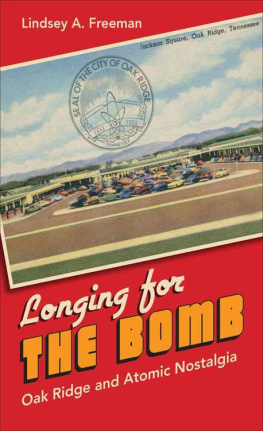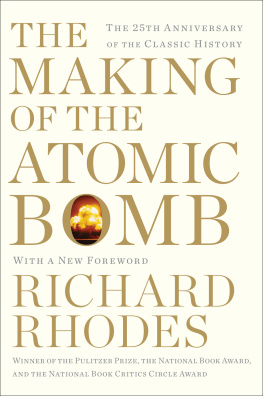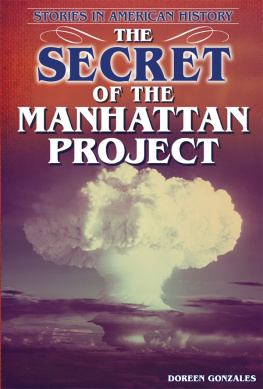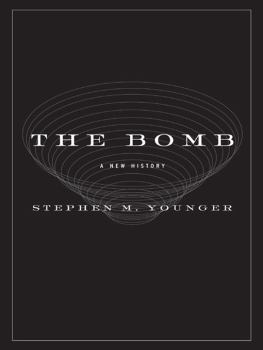Delgado - 9781780962382 Nuclear Dawn: The Atomic Bomb, from the Manhattan Project to the Cold War
Here you can read online Delgado - 9781780962382 Nuclear Dawn: The Atomic Bomb, from the Manhattan Project to the Cold War full text of the book (entire story) in english for free. Download pdf and epub, get meaning, cover and reviews about this ebook. City: Oxford, year: 2009;2011, publisher: Random House Digital Dist;Osprey, genre: Politics. Description of the work, (preface) as well as reviews are available. Best literature library LitArk.com created for fans of good reading and offers a wide selection of genres:
Romance novel
Science fiction
Adventure
Detective
Science
History
Home and family
Prose
Art
Politics
Computer
Non-fiction
Religion
Business
Children
Humor
Choose a favorite category and find really read worthwhile books. Enjoy immersion in the world of imagination, feel the emotions of the characters or learn something new for yourself, make an fascinating discovery.
9781780962382 Nuclear Dawn: The Atomic Bomb, from the Manhattan Project to the Cold War: summary, description and annotation
We offer to read an annotation, description, summary or preface (depends on what the author of the book "9781780962382 Nuclear Dawn: The Atomic Bomb, from the Manhattan Project to the Cold War" wrote himself). If you haven't found the necessary information about the book — write in the comments, we will try to find it.
Delgado: author's other books
Who wrote 9781780962382 Nuclear Dawn: The Atomic Bomb, from the Manhattan Project to the Cold War? Find out the surname, the name of the author of the book and a list of all author's works by series.
9781780962382 Nuclear Dawn: The Atomic Bomb, from the Manhattan Project to the Cold War — read online for free the complete book (whole text) full work
Below is the text of the book, divided by pages. System saving the place of the last page read, allows you to conveniently read the book "9781780962382 Nuclear Dawn: The Atomic Bomb, from the Manhattan Project to the Cold War" online for free, without having to search again every time where you left off. Put a bookmark, and you can go to the page where you finished reading at any time.
Font size:
Interval:
Bookmark:
THE ATOMIC BOMB FROM THE MANHATTAN PROJECT TO THE COLD WAR

The concept of a super-weapon has dominated military thought and development since the beginning of warfare. From spear to bow, ballista to cannon, Greek fire to gunpowder, and from black powder to dynamite, human beings have sought increasingly deadly ways to achieve victory in war. The rapid discovery of the secrets of the atom, beginning in the late 19th century and intensifying in the first four decades of the 20th century, resulted in a crash program a veritable race to develop and deliver the worlds first atomic bombs during World War II. The success of that effort saw an initial test followed by the first military use of the new bomb in 1945.
The atomic attacks on Hiroshima and Nagasaki, Japan, in early August 1945 forever changed warfare in a way that no other weapon in history had done. For the first time, humans had created a weapon that could, in its ultimate form, devastate the planet and quite probably destroy all life on earth. The military, political, and social implications of a weapon known simple as The Bomb have profoundly affected civilization ever since. This is the story of the beginning of that new era in human history and of the weapon that changed not only warfare, but also global society and international politics.
A number of colleagues and institutions provided information, advice, reviews, and support through the years. I would like to thank Roger Meade of Los Alamos National Laboratory, Lloyd Graybar, Jonathan Weisgall, Gregg Herken, Norman Polmar, Hugh Gusterson, Betty Perkins, Jack Niedenthal, and Ed Linenthal on matters of the bomb, defense, and Bikini. I would also like to acknowledge the support of those veterans of the Manhattan Project, the 509th, and Operation Crossroads, especially the late Woodrow Swancutt, Leon Smith, Bob Henderson, Ernest Peterkin, Dick Laning, Enders Huey, Hank Arnold, Lewis Talley, Alvin Brommer, Edward Clevenger, George Culley, Harold Demarest, and W. R. Dill.
I thank my National Park Service colleagues in the Submerged Resources Center, the History Division, and the National Historic Landmark Program for their support when I was working with them on the Bikini Atoll project Ed Bearss, Rowland Bowers, Jerry Rogers, Dan Lenihan, Larry Murphy, Larry Nordby, Jerry Livingston, John Brooks, Candace Clifford, Kevin Foster, Harry Butowsky, Jim Charleton, Robbyn Jackson, and Steve Haller. Thanks also go to those who made the initial and later trips to Bikini informative and adventurous: Fabio Amaral, Len Blix, John Brooks, Werner Zehnder, Ken Hiner, Eric Hiner, Catherine Kitty Courtney, Lee McEachern, George Lang, Edward Maddison, Kane Janer, Al Giddings, Roger Joel, Wilma Revlon, John Lajuan, Dave Campbell, Mike Messick, Harry Nashon, Stephen Notarianni, Bill Livingston, Jeanne Rawlings and Bill Robison.
The following organizations and institutions were also a great help: Los Alamos National Laboratory, Los Alamos, New Mexico; Lawrence Livermore National Laboratory, Livermore, California; US Department of Energy Archives, Las Vegas, Nevada; US National Archives, Military Branch and Still Pictures Branch, Washington, DC; US Naval Historical Center, Washington, DC; the Library of Congress, Washington, DC; the National Air & Space Museum, Washington, DC; the US Naval Institute, Annapolis, Maryland; White Sands Missile Range, Alamogordo, New Mexico; the Los Alamos Historical Society, Los Alamos, New Mexico.
The review and editing of my assistant, Kathy Smith, once again made the task of writing easier. I owe her my usual debt of gratitude. I also wish to thank the Osprey team, especially Jaqueline Mitchell and Ruth Sheppard. Last, but not least, I thank my wife Ann for her constant support and love.
James P. Delgado
August 2008
| C . 540 BC | Democritus proposes atomism. |
| C . 440 BC | Aristotle attacks atomism. |
| C . AD 1200 | The Western world rediscovers atomism. |
| 1649 | French scientist Pierre Gassendi leads the revival of atomism with the publication of Syntagma philosophiae Epicuri. |
| 1803 | John Dalton of Britain proposes chemical atomic theory. |
| 185565 | The cathode-ray tube is invented and perfected. |
| 1895 | Wilhelm Conrad Rntgen of Germany discovers X-rays. |
| 189698 | Antoine Henri Becquerel and Pierre and Marie Curie of France discover natural radioactivity. |
| 1897 | J. J. Thomson of Britain discovers the electron. |
| 1899 | Ernest Rutherford of Britain discovers alpha and beta rays in his study of radium. |
| 1900 | Frederick Soddy of Britain is the first to identify and describe isotopes. |
| 1902 | Rutherford and Soddy publish the theory of radioactive decay. |
| 1905 | Einstein publishes the theory of relativity. (E=mc2). |
| 1911 | Rutherford discovers the nucleus of the atom. |
| 1913 | Niels Bohr of Denmark combines nuclear and quantum theory to create a new theory of atomic structure. |
| 1914 | H. G. Wells publishes The World Set Free and describes atomic bombs. |
| 1915 | Einstein publishes the general theory of relativity. |
| 1919 | Rutherford creates the first artificially induced nuclear reaction when he bombards nitrogen gas with alpha particles and transmutes it into an oxygen isotope. |
| 1929 | Ernest O. Lawrence of the United States develops the concept of the cyclotron to increase the speed of protons hurled at atomic nuclei. John Crockcroft and E. T. S. Walton develop the first linear accelerator for accelerating protons to study atomic transmutation. |
| 1931 | Ernest O. Lawrence builds his first cyclotron. |
| 1932 | James Chadwick of Britain discovers the neutron. |
| 1933 | Physicist Le Szilrd is the first to realize that a chain reaction might be set up if an element could be found that would emit two neutrons when it swallowed one neutron. Frdric and Irne Joliot-Curie of France discover artificial radioactivity. |
| 1934 | Enrico Fermi of Italy is the first to achieve nuclear fission in an experiment, but he does not realize his achievement. |
| 1938 | Otto Hahn of Germany conducts experiments that result in nuclear fission. |
| 1939 | Publication of Hahns results excites physicists around the world, who begin to conduct experiments in fission. Alarmed by the possibility of a uranium bomb, Albert Einstein writes to colleagues, who forward the letter to US President Franklin D. Roosevelt. Roosevelt responds by creating a committee to look into the military applications of atomic research. World War II begins. |
| 1940 | Scientists in the United Kingdom secretly encourage a British atomic bomb project. Using the cyclotron, scientists Philip Abelson and Edwin McMillan at the University of California, Berkeley, bombard uranium-238 to create elements 93 and 94. |
| 1941 | The United States enters the war. Scientist Glen Seaborg discovers that element 94 is plutonium. American scientists determine that it can be used to make an atomic bomb. The British MAUD Project determines that it is possible to make an atomic bomb with uranium-235. |
| 1942 | The United States creates the top-secret Manhattan Project to develop an atomic bomb. An experimental reactor pile at the University of Chicago generates the first self-sustaining nuclear reaction. |
Font size:
Interval:
Bookmark:
Similar books «9781780962382 Nuclear Dawn: The Atomic Bomb, from the Manhattan Project to the Cold War»
Look at similar books to 9781780962382 Nuclear Dawn: The Atomic Bomb, from the Manhattan Project to the Cold War. We have selected literature similar in name and meaning in the hope of providing readers with more options to find new, interesting, not yet read works.
Discussion, reviews of the book 9781780962382 Nuclear Dawn: The Atomic Bomb, from the Manhattan Project to the Cold War and just readers' own opinions. Leave your comments, write what you think about the work, its meaning or the main characters. Specify what exactly you liked and what you didn't like, and why you think so.

